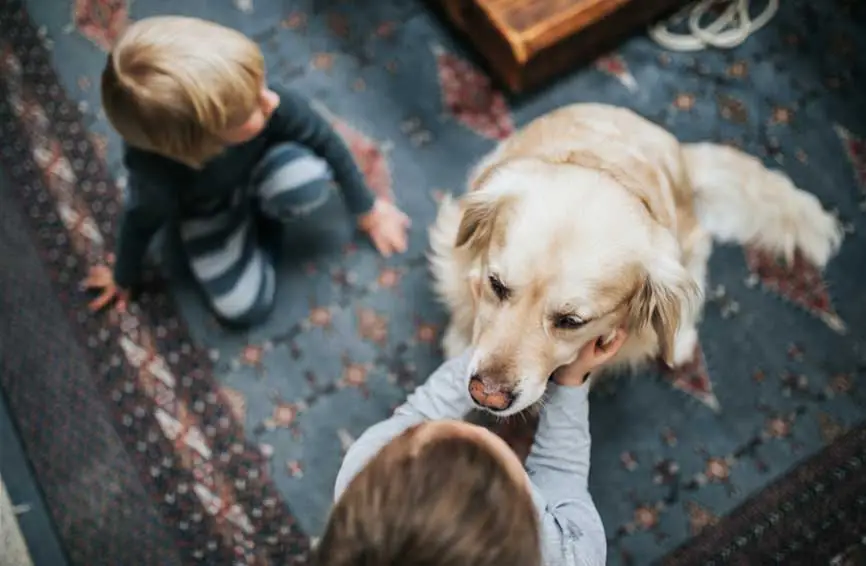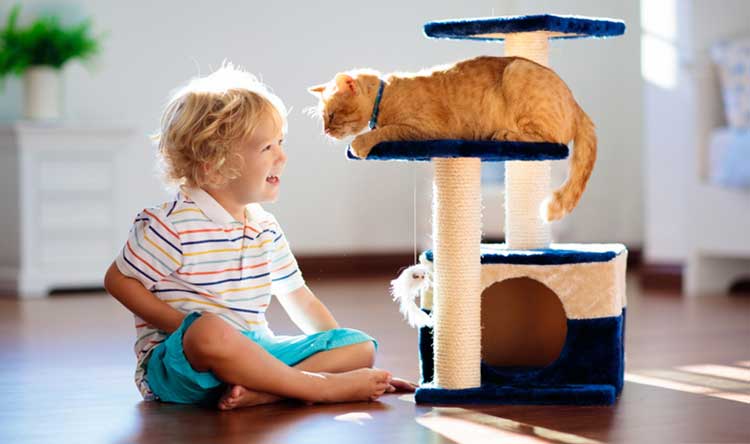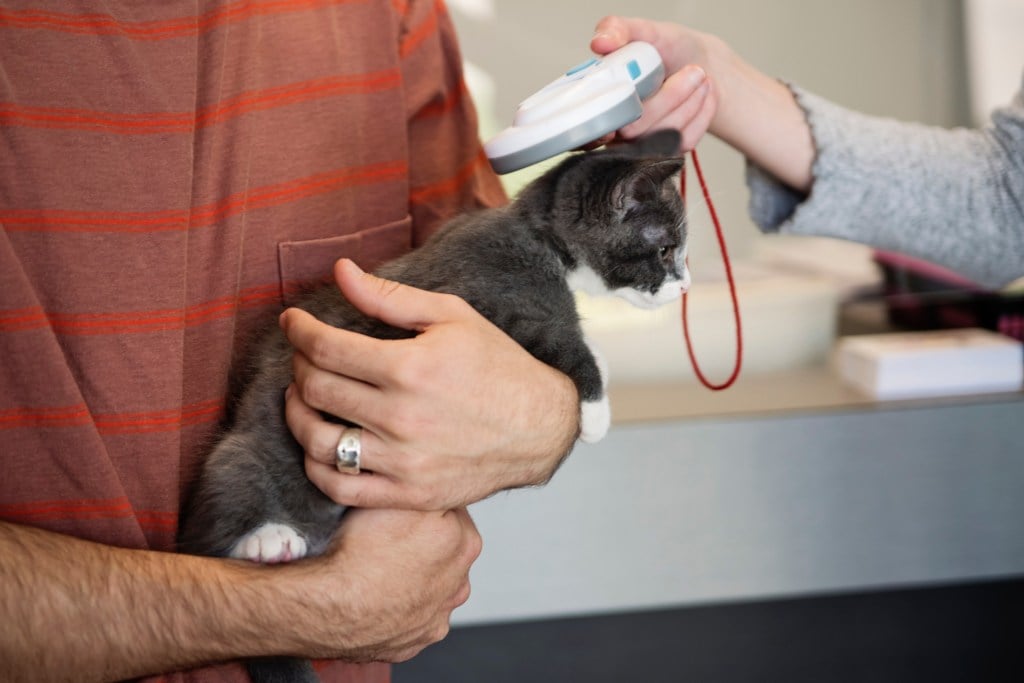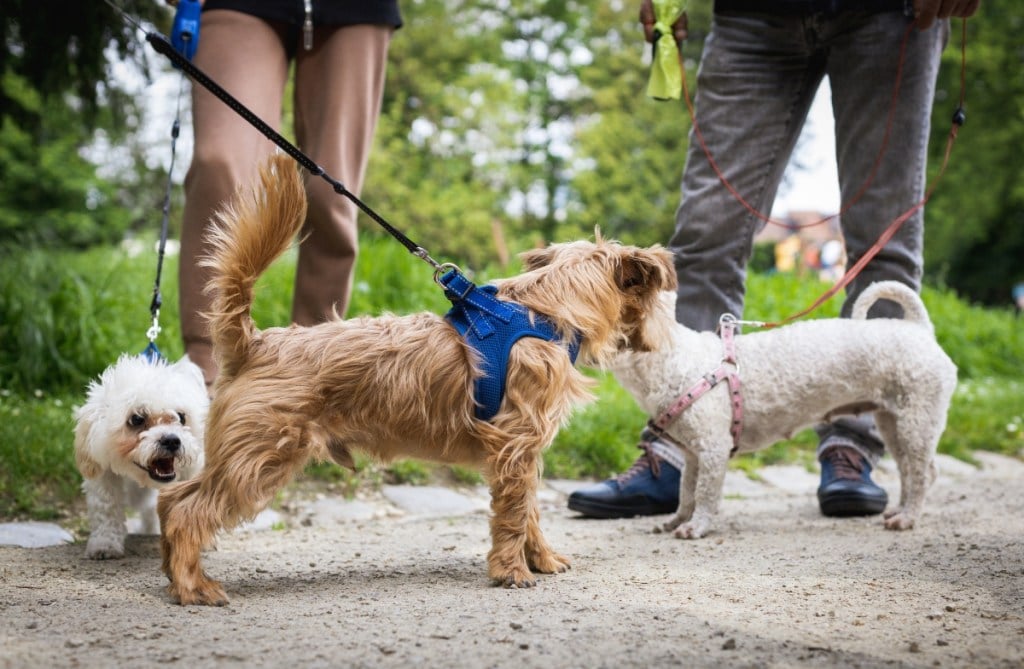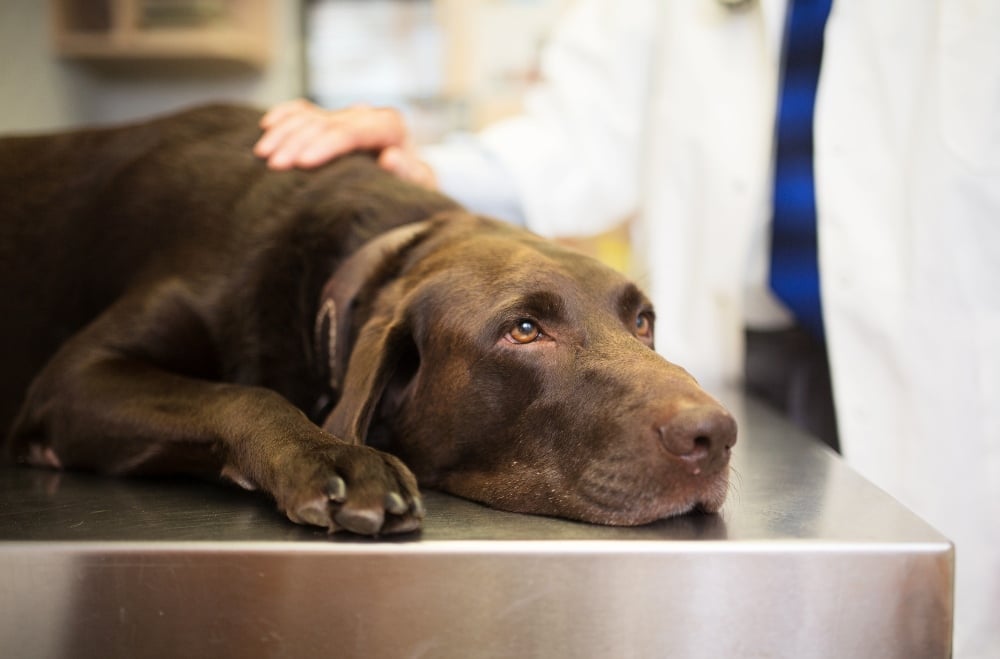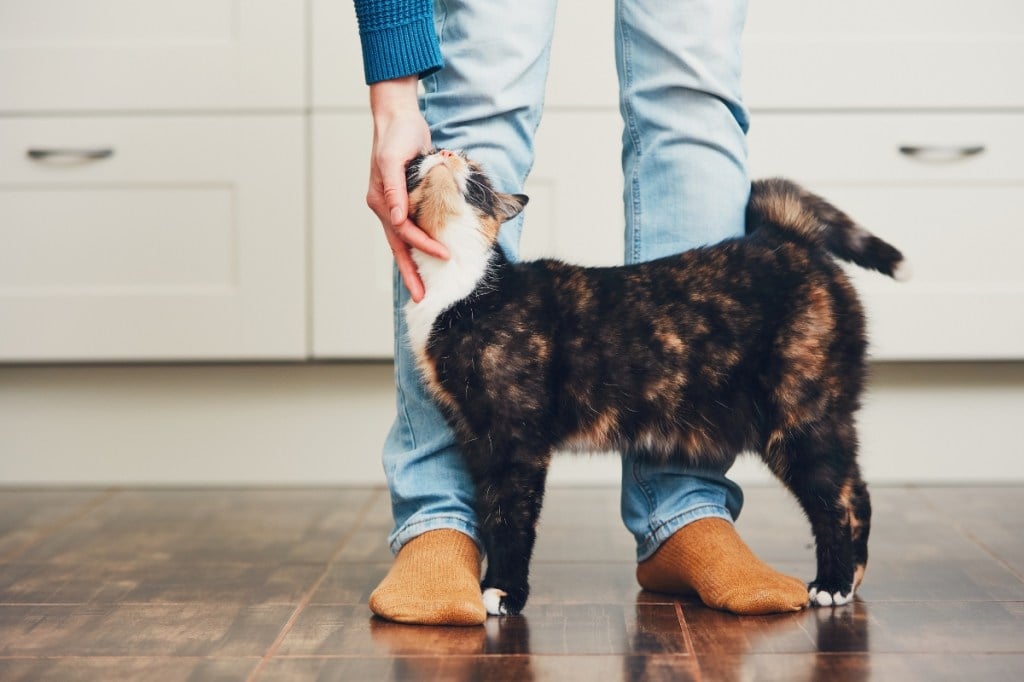Table of Contents
Key Takeaways
- Children benefit greatly from having a pet, but it’s essential to choose the right kind of pet and introduce them properly.
- Whether to get a dog or a cat will depend on your family’s energy level and how much time you have to care for a pet.
- Whichever pet you get, the key is to prepare your family ahead of time and make introductions slowly and carefully.
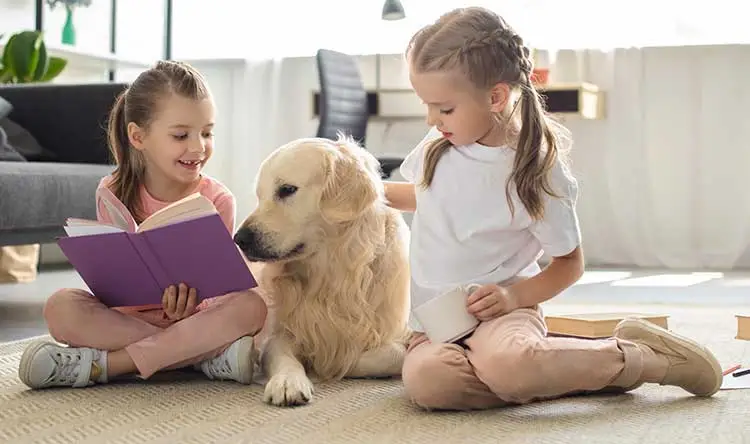
So, your children are old enough to enjoy having a pet around and have been begging for one.
Should you get a dog or a cat? How do you keep the kids safe? How do you teach them the responsibility of owning a pet?
We asked Sarah-Anne Reed, holistic dog trainer and owner of Pack Dynamics LLC for advice.
How do I know if my child is ready to have a dog?
Your child must be old enough to understand and follow instructions regarding interacting with and taking care of your dog. If they aren’t on board with the training and following your cues, the inconsistency can cause a lot of anxiety for your, resulting in your dog having behavioral issues.
If your child is still having extreme melt-downs, like kicking, screaming, hitting, or throwing things, this is not a comfortable, safe environment to bring a dog into and could cause a dog to become fearful. When dogs are afraid, they are likely to growl or nip at the person they are scared of, and this could easily lead to a bite to your child. It doesn’t mean that the dog is aggressive, just that they need to be in a home without children.
Your child is ready to have a dog if they:
- Can listen and follow directions.
- Know how to express anxiety or anger in a healthy way, that doesn’t involve yelling or hitting.
- Have demonstrated they can be gentle, kind, and loving towards animals.
- Have a realistic understanding of what taking care of a dog means.
How do I know if my child is ready to have a cat?
Cats are much less responsibility for a child. They don’t need to be walked or trained and are pretty self-sufficient. A cat can make a great childhood friend, especially if they are affectionate and like to snuggle on your lap. A cat can be the perfect starter pet for younger children to help teach them responsibilities, like feeding your cat, brushing them, and cleaning their litter box.
It’s also an excellent opportunity to teach your child the appropriate way to give affection to an animal. Teaching them not to pull their tail, how to pet them nicely, to talk to them with kindness, and always show love. It’s vital to ensure that you choose the right temperament when getting a cat because not all cats enjoy affection or feel comfortable with children. Spend some time with the cat before making that decision to bring home a new family member.
What are the differences between introducing a dog or a cat to my child?
Introducing cats to children
Introducing a cat into your home is a much easier process than a dog. The calmer the environment is, the more comfortable it will be for your new pet to adjust to their new home and family. When introducing a cat, first let them slowly have a chance to explore their new home and show them their litter box. Change for cats can be difficult and create curiosity and sometimes fear, which is why it’s crucial to slowly introduce them to family members. Children can be difficult for animals because they are smaller, their movements are more unpredictable, and they sound and behave differently than adults.
When a cat gets scared, they can hiss or scratch, which could be scary for a child. They could also resort to hiding. Neither reaction creates a happy experience for your cat or child.
Make sure that your family is relaxed and slowly introduce the cat to each family member, one at a time. Ask your child to call the kitty over to them and first let the cat sniff their hand, then offer some treats. If the cat comes over and seems comfortable with your child, ask them to gently touch them, as you give guidance and encouragement.
Tips:
- It’s better to have several short interactions with your cat so as not to put too much pressure on them.
- Don’t force any interactions. If your cat doesn’t want to be held or touched, respect that they may need more time to settle in.
- Take baby steps until you have created a comfortable experience for both the cat and your child.
Introducing dogs to children
Introducing a dog to your child can be much more involved. Before ever deciding to get a puppy or adopt a dog, always have your child meet the dog first to see how they interact with each other. If you are thinking of adopting a dog, many dogs have had bad experiences with children or adults in their past, which can cause them to be wary and nervous with children and people in general. I do not recommend adopting a dog who shows any anxiety or fear with your child, as it can take months or even years to help a dog overcome fear, no matter how kind your child is.
Once you have determined that the puppy or rescue dog will be a good match for your family and lifestyle, it’s a good idea to bring something familiar into your home to help them adjust. You can bring their dog bed, a blanket, and toys that will be comforting to them. Set up everything for your dog so that they start to learn where their water bowl is and can go to their familiar dog bed or grab their toy if they need some familiar comforts.
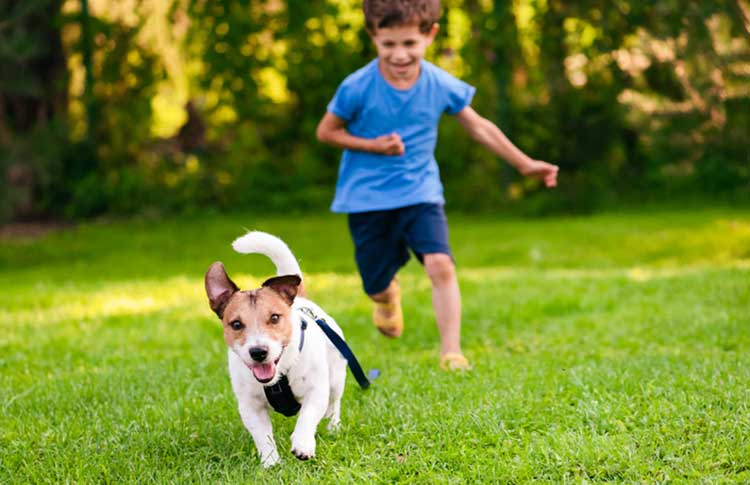
The introduction step-by-step:
- The best way to introduce a dog to your child is to sit them in a chair beside you as the dog is walked into the room by another adult with a slack leash. It’s vital that the dog and child be as calm as possible before they meet giving them the best opportunity for success.If the dog walks ahead of the person on leash, the handler turns around to walk in the opposite direction a few steps, then waits 30 seconds before walking back into the room.
- Repeat bringing the dog in until he is calmly walking beside the person without any eye contact or talking as they are being walked into the room. Be sure no one is looking at the dog or talking to them, to help the dog feel relaxed, with no pressure.
- The person holding the leash sits in a chair across the room from the child, and everyone continues ignoring the dog until he settles down and stops trying to get everyone’s attention. Once the dog has been calm for five minutes, you can drop the leash, and then the child can call the dog over for affection in a relaxed, friendly tone. Be sure the child is sitting with their body facing away from the dog, so as not to loom over them when they approach for attention and offer a treat, with the palm of their hand facing up.
- Once the dog feels comfortable accepting the treat, the child can reach down with one hand and slowly pet them on their chest first, never over their head, as that can make a dog feel uncomfortable. If the dog appears to feel safe and relaxed, they can rub the back, rump, and tummy.
Taking these additional steps will help your dog learn how to calmly interact with your child and teach your child to be kind and gentle to your dog. Your dog has emotions too and can feel nervous or uncomfortable. It’s wise to keep the leash attached to the dog for a while, just in case you misjudged their reaction, you can easily remove the dog from the room if you need to.

What can I do to prepare my child ahead of adopting a dog or cat?
Discussing the responsibilities
Talk to your children before adopting a dog or cat and explain the additional help you will need from them. Your children should feel included in the process and understand that this is a life-long commitment.
Take a “trial run” by pet sitting
It’s a great idea to dog sit for at least a week for a friend or family member to give a real-life experience to your child about the reality of having a dog. Include them in feeding the dog, teaching them how to brush the dog, give affection and play appropriately and take your child along during walks.
Playing with a dog sounds fun, but are they willing to help take the dog out to eliminate, and do the necessary “poop patrol,” even when it’s a cold or a rainy day?
You can also cat-sit if you are planning on getting a kitty to teach your child about the responsibilities of having a cat, like cleaning the litter box, feeding, and brushing them. It’s also essential to teach them how to appropriately play with and give affection to the cat. If you don’t know anyone you can dog- or cat-sit for you could foster for a week. This not only gives you a tremendous real-life experience and also allows you to see if the pet is a good fit for your family and lifestyle.
Is there any other advice you could give to parents wanting to bring a dog or cat into the household?
If you feel like you are already juggling too much in your life, know that having a dog often feels like having another child. Dogs have different needs than children, but if you don’t have the time and patience to dedicate to training and their care as a family, it’s not a good idea to bring a dog into your home as you will feel even more overwhelmed. A cat may be a better option for busy parents, as they require much less time and attention and don’t need training, but still allow your child to learn about the responsibility and joys of caring for and loving an animal.
I do not recommend asking your children to walk your new puppy or dog until you have mastered heel training. Most adults have difficulty walking an untrained dog and a child could easily get hurt, or the dog could get loose and run away or get injured. Once your dog knows how to heel it’s advisable that you walk your dog with your child for a while until your child feels confident and you trust your child to handle every situation that may happen during a typical walk. If your dog reacts to other dogs, either wanting to play with them or nervous when they see another dog, this can be too much to handle for most children, depending on their age.
Sarah-Anne Reed is a holistic dog trainer, and owner of Pack Dynamics, LLC ®. Her practice focuses on understanding and respecting dogs as a different species and honoring them as individual beings.
This article is copyrighted by Sarah-Anne Reed and Pack Dynamics® LLC, and no reproduction of this article without the express permission of Sarah-Anne Reed is permitted.
Are you thinking about getting a new pet? Then you are a great candidate for pet insurance. Get a quote and make sure you’re covered for future injuries or illnesses.
